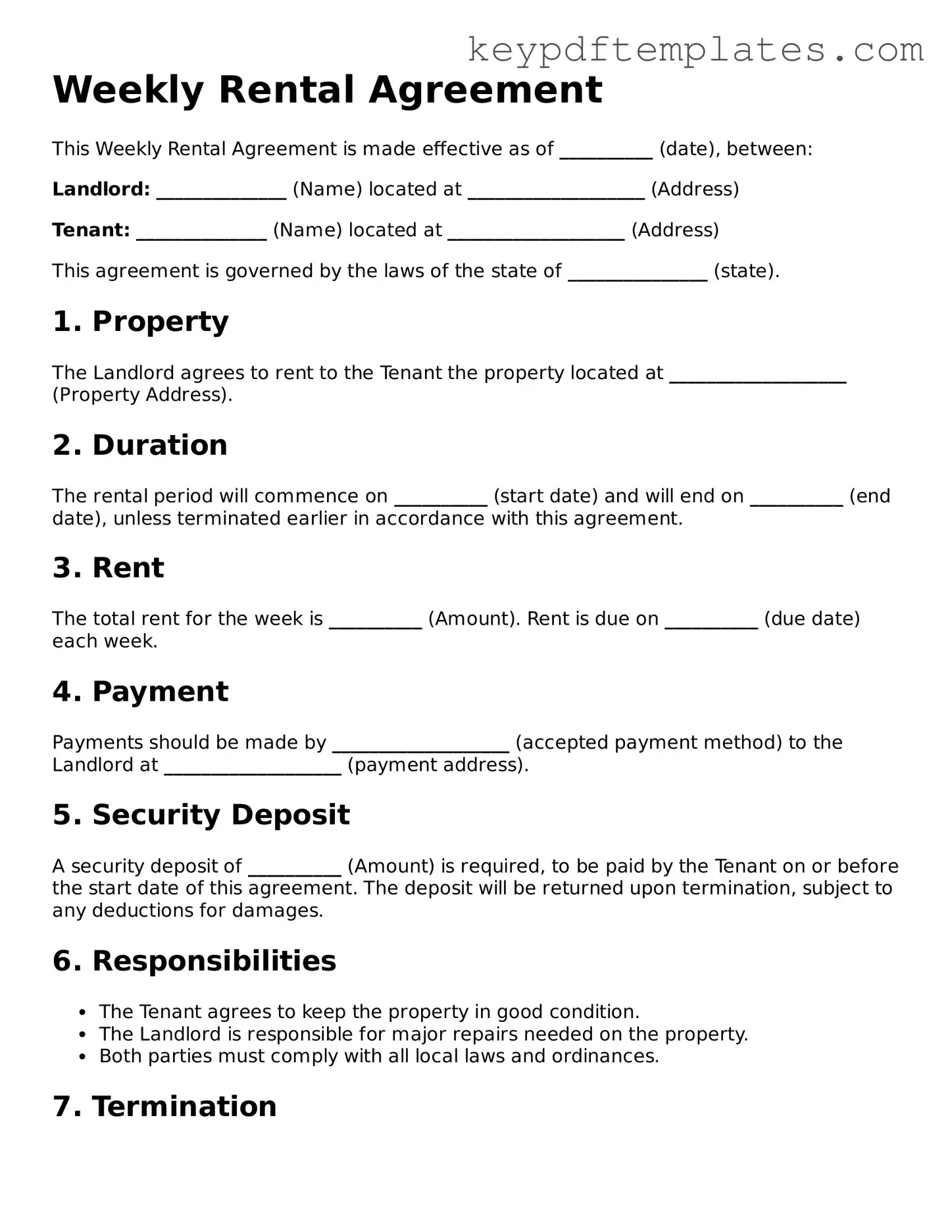Printable Weekly Rental Agreement Template
A Weekly Rental Agreement is a legal document that outlines the terms and conditions for renting a property on a weekly basis. This agreement protects both the landlord and the tenant by clearly defining responsibilities, payment schedules, and rules for property use. Understanding this form is essential for anyone involved in short-term rental arrangements.
Modify Document Online
